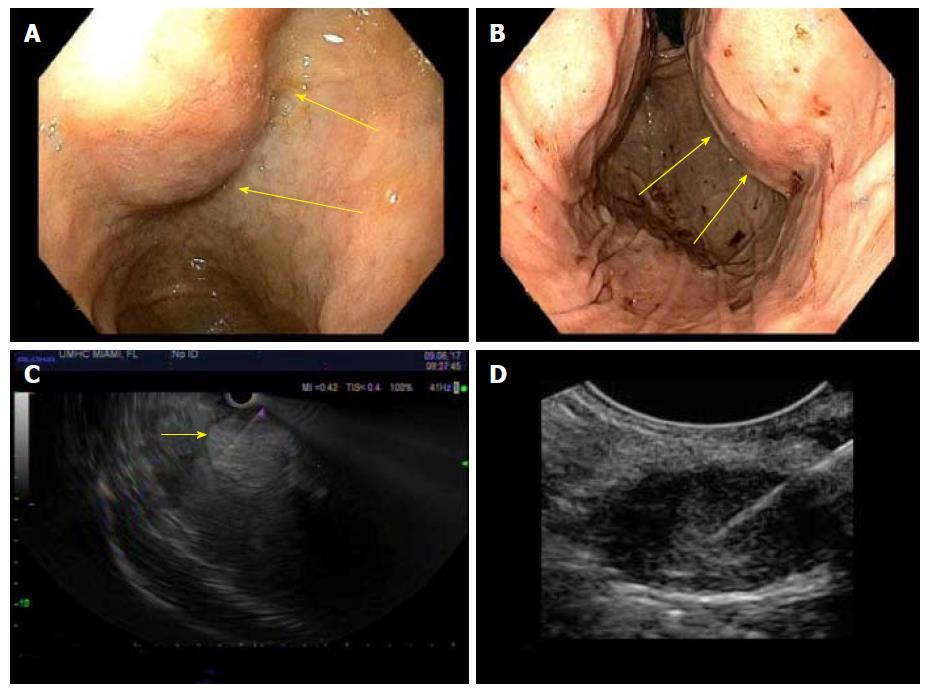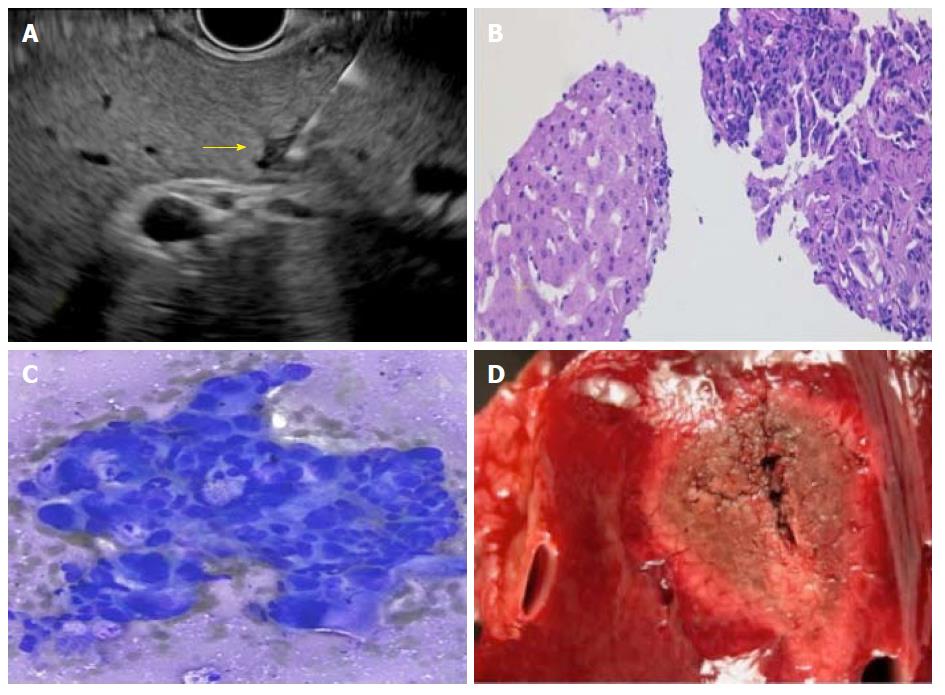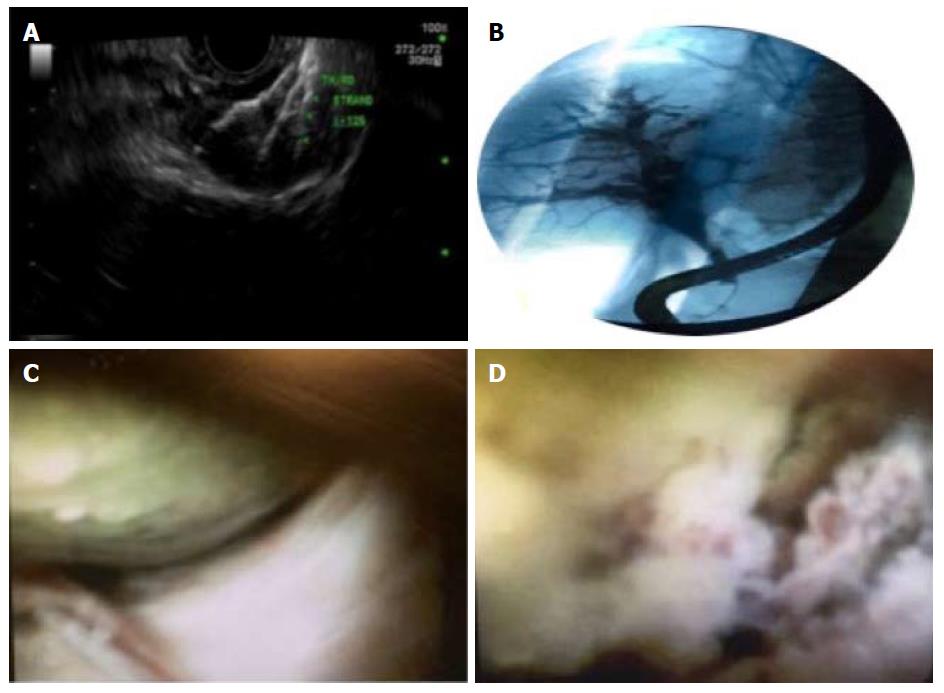Copyright
©The Author(s) 2018.
World J Gastrointest Endosc. Feb 16, 2018; 10(2): 56-68
Published online Feb 16, 2018. doi: 10.4253/wjge.v10.i2.56
Published online Feb 16, 2018. doi: 10.4253/wjge.v10.i2.56
Figure 1 Diagnostic algorithm discussing role of endoscopic ultrasonography (EUS), and potential merits.
Potential advantages of EUS in the management algorithm (1) Stratification of indeterminate nodules, especially in high-risk patients, with negative imaging characteristics, which may eventually change the management[14]; (2) In detection and characterization of smaller lesions < 2 cm[14,19,113]; (3) If a lesion is found by EUS, cytology / histology can be obtained in the same session rather than performing another procedure at later time[19]; (4) Assessment of portal vein invasion, spread to other vasculature and lymph nodes[26,118]; (5) The ability to sample enlarged regional lymph nodes for preoperative staging[118]; (6) Therapeutic roles: tumor ablation by intra-tumoral injection of absolute alcohol, radiofrequency probes, fiducial placement for stereotactic radiotherapy, brachytherapy using radioactive seeds and EUS guided biliary drainage[121]. EUS: Endoscopic ultrasonography.
Figure 2 Endoscopic ultrasonography (EUS) diagnosis of primary liver tumors.
A and B: Indentations seen in the duodenal bulb and stomach, from large lesions in the right and left lobes of the liver; C: On EUS, the entire liver tissue was seen replaced by numerous hyperechoic lesions of medium size, causing hepatomegaly and hence indentations. Fine needle aspiration (FNA) of a prominent and accessible hyperechoic lesion obtained, which was diagnostic of neuroendocrine tumor; D: In another patient, EUS-FNA of solitary hypoechoic liver lesion obtained, which diagnosed hepatocellular carcinoma.
Figure 3 Endoscopic ultrasonography diagnosis of secondary liver lesions.
A: Fine needle aspiration performed on small hypoechoic lesion in the liver; B and C: Pathology suggested pancreatic metastatic lesion; D: Partial hepatectomy performed for a solitary metastatic lesion.
Figure 4 Other novel uses of endoscopic ultrasonography and cholangioscopy in hepatocellular carcinoma diagnosis and management.
A: HCC EUS guided Brachytherapy: Radioactive seeds loaded and deployed with endoscopic ultrasound, similar to fiducial placement, as an alternative to transarterial chemo-embolization therapy; B, C and D: Patient with choledochal cyst, found to have ectopic HCC, diagnosed with digital cholangioscopy and biopsies[122].
- Citation: Girotra M, Soota K, Dhaliwal AS, Abraham RR, Garcia-Saenz-de-Sicilia M, Tharian B. Utility of endoscopic ultrasound and endoscopy in diagnosis and management of hepatocellular carcinoma and its complications: What does endoscopic ultrasonography offer above and beyond conventional cross-sectional imaging? World J Gastrointest Endosc 2018; 10(2): 56-68
- URL: https://www.wjgnet.com/1948-5190/full/v10/i2/56.htm
- DOI: https://dx.doi.org/10.4253/wjge.v10.i2.56












